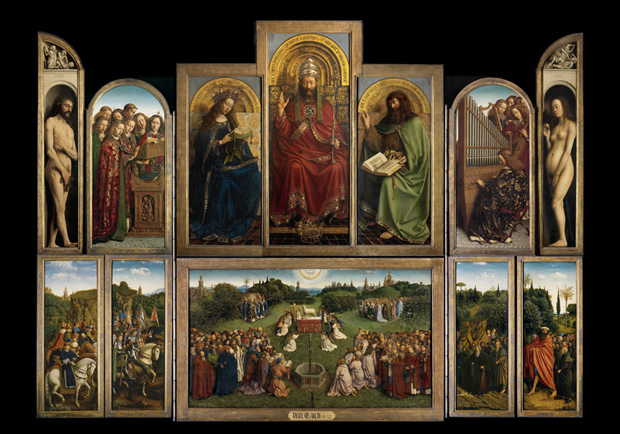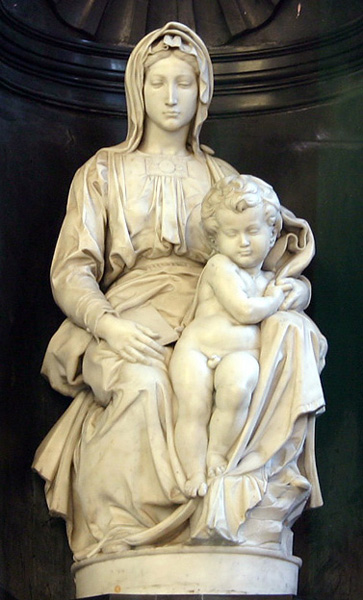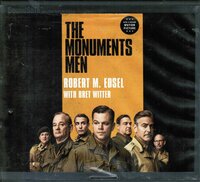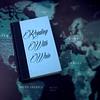Take a photo of a barcode or cover
612 reviews for:
The Monuments Men: Allied Heroes, Nazi Thieves, and the Greatest Treasure Hunt in History
Robert M. Edsel
612 reviews for:
The Monuments Men: Allied Heroes, Nazi Thieves, and the Greatest Treasure Hunt in History
Robert M. Edsel
For those whose love those random and interesting fun facts about history this is a great book to read. For those who don't like history it will be dry, boring and hard to follow. It's not just another book about World War 2. This book shares a story about thousand of paintings, sculptures and other priceless prices of art were taken and hidden away. Without a few outstanding men this art would have been lost. A great story that was even better than the movie adaptation. One of my recommended reads.
An interesting story that deserves to be recorded. As a student of the history of WWII I was aware that the Nazis looted art and that much of that art ended up in large hoards uncovered by the US Army at the end of the war, but the details were unknown to me.
Since I probably wouldn't have read this book if not for the upcoming movie, I think it's fair to mention that the book did not make me think that it needed to be made into a movie. Indeed, watching the trailer, nearly everything that appears in it is fiction made for the movie and not incidents from the book.
I would guess that the main thing going for the story for filmmakers was to give a group of 40+ year old actors a semi-legitimate reason to dress up in fatigues and make one more war movie (and I say that despite being a fan of most of the actors in the movie).
Since I probably wouldn't have read this book if not for the upcoming movie, I think it's fair to mention that the book did not make me think that it needed to be made into a movie. Indeed, watching the trailer, nearly everything that appears in it is fiction made for the movie and not incidents from the book.
I would guess that the main thing going for the story for filmmakers was to give a group of 40+ year old actors a semi-legitimate reason to dress up in fatigues and make one more war movie (and I say that despite being a fan of most of the actors in the movie).
adventurous
informative
slow-paced
Nice to read the book - way better than the movie, although not quite so dramatic. Just a fascinating story.
adventurous
informative
inspiring
medium-paced
I'm glad I read it, even if it did start dragging in a few places! The movie was more interesting, as movies often are - the facts tend to get muddled up to make a better popcorn story. :-p
But reading the "real" version was still really cool!
Recommended for art history nerds like me!
But reading the "real" version was still really cool!
Recommended for art history nerds like me!
“If, in time of peace, our museums and art galleries are important to the community, in time of war they are doubly valuable. For then, when the petty and the trivial fall way and we are face to face with final and lasting values, we… must summon to our defense all our intellectual and spiritual resources. We must guard jealously all we have inherited from a long past, all we are capable of creating in a trying present, and all we are determined to preserve in a foreseeable future. Art is the imperishable and dynamic expression of these aims. It is, and always has been, the visible evidence of the activity of free minds.…”
During WWII a group of art experts were sent to Europe in order to save the worlds most famous and historically important works of art. They had very little provisions provided for them and most of the time, the other people in charge had no idea what to do with them. They also had no real idea if some of the pieces had been taken by allies and hidden away, or if they had been stolen by the Nazi's. It was a constant race of trying to get pieces before they were taken and trying to convince the original owners that the pieces needed to be protected at all in some situations.
Overall I found it fascinating to learn more about art/monument history during WWII. We knew that some pieces had been protected by the allies, but no real idea how they got into their hands in the first place before the Nazi's got them. Without the museum men and women that saved the world's history from possibly being destroyed in the enemy's hands so much would have been lost. So to all of them, we thank you.
For the book to movie part. I think the movie did really well and I would highly recommend it. It's hard to imagine without the photos etc, of how much the Nazi's really took.
“To save the culture of your allies is a small thing. To cherish the culture of your enemy, to risk your life and the life of other men to save it, to give it all back to them as soon as the battle was won… it was unheard of, but that is exactly what Walker Hancock and the other Monuments Men intended to do.”
During WWII a group of art experts were sent to Europe in order to save the worlds most famous and historically important works of art. They had very little provisions provided for them and most of the time, the other people in charge had no idea what to do with them. They also had no real idea if some of the pieces had been taken by allies and hidden away, or if they had been stolen by the Nazi's. It was a constant race of trying to get pieces before they were taken and trying to convince the original owners that the pieces needed to be protected at all in some situations.
Overall I found it fascinating to learn more about art/monument history during WWII. We knew that some pieces had been protected by the allies, but no real idea how they got into their hands in the first place before the Nazi's got them. Without the museum men and women that saved the world's history from possibly being destroyed in the enemy's hands so much would have been lost. So to all of them, we thank you.
For the book to movie part. I think the movie did really well and I would highly recommend it. It's hard to imagine without the photos etc, of how much the Nazi's really took.
“To save the culture of your allies is a small thing. To cherish the culture of your enemy, to risk your life and the life of other men to save it, to give it all back to them as soon as the battle was won… it was unheard of, but that is exactly what Walker Hancock and the other Monuments Men intended to do.”
I first picked it up after seeing the movie. I was intrigued, about these men and woman who fought so hard to save the culture of overthrown countries, and even their enemies finest art collections. Why hadn't I heard of them before?
Monuments Men is full of anecdotes of what became of the some of the world's most renowned paintings/sculptures/buildings/etc, and honors heroes the majority of the world has never known. It brings up the important fact that who are we as human beings, to destroy the essence... the history of who we are and who we were.
It does however get bogged down in the middle with names, dates, and places, but please stick with it. It's a story worth reading.
Monuments Men is full of anecdotes of what became of the some of the world's most renowned paintings/sculptures/buildings/etc, and honors heroes the majority of the world has never known. It brings up the important fact that who are we as human beings, to destroy the essence... the history of who we are and who we were.
It does however get bogged down in the middle with names, dates, and places, but please stick with it. It's a story worth reading.
I picked this book up after watching the documentary, “Rape of Europa”. I was completely fascinated by the stories of the people and the art the documentary detailed and wanted to know more. I figured that by reading the books the documentary used as source material, I would get the bigger picture. I started with, “Monuments Men” by Robert Edsel and have “Rape of Europa” next on my shelf.
This is probably the first American World War II history book I have ever read that wasn’t part of school curriculum reading. I completely admit to a lack of knowledge about the nitty gritty of World War II on-the-ground-facts. This book was full of that and with the added angle of the art world, a personal interest, I was completely fascinated. I’m not sure if someone with a better historical education of World War II would find the individual stories as interesting as I did. I also think that if you don’t really care about art in general, you won’t find this as interesting.
This is the story of the Monuments Men, a group of soldiers (they were never a formed unit, rather just individuals who were attached to specific battalions) entrusted with protecting the entire cultural heritage of Western Europe for the Allies in World War II. Such a mission had never before been undertaken and, in modern times, was not undertaken again until after the first Iraq war. These men were right behind or on the front lines, attempting to minimize damage to cultural landmarks from aerial bombings and fighting, cataloging the astounding looting of art by the Nazis and beginning the search for and restoration of the looted art to the correct owners.
I also enjoyed the larger story told of the war itself. Most of it centered on the drive towards and invasion of Germany. Most of the time you read or study the invasion of France on the shores of Normandy, then you study how the Allies war machine turned towards this country and that country and were joined by this Ally and that Ally and the decision making processes of their leaders; there isn’t too much about the individual troops on the ground who aren’t necessarily anyone important. This book told some of their stories and recognized them as small cogs in a massive war machine which couldn't be denied. This book also told the story of the actual invasion of Germany, which I had never learned about before.
The story is extraordinary. The Monument Men were fighting to save historical buildings that were being fought over room by room. Every time they found another cache of looted art, they were forced to improvise methods to save it, sometimes from conditions that were destroying it before they could get to it. But the parts I truly enjoyed the most were the stories of the individual soldiers. Letters from husbands to wives are in these pages and stories of strength, courage and horror are here are well.
The book is very well-researched and written. I think Mr. Edsel does a good job balancing the individual stories against the background of the larger personalities and war. There is only one section of the book that I felt like was bogged down in dates, names and other dry facts, but it goes by quickly and didn’t change my enjoyment in the end.
This is probably the first American World War II history book I have ever read that wasn’t part of school curriculum reading. I completely admit to a lack of knowledge about the nitty gritty of World War II on-the-ground-facts. This book was full of that and with the added angle of the art world, a personal interest, I was completely fascinated. I’m not sure if someone with a better historical education of World War II would find the individual stories as interesting as I did. I also think that if you don’t really care about art in general, you won’t find this as interesting.
This is the story of the Monuments Men, a group of soldiers (they were never a formed unit, rather just individuals who were attached to specific battalions) entrusted with protecting the entire cultural heritage of Western Europe for the Allies in World War II. Such a mission had never before been undertaken and, in modern times, was not undertaken again until after the first Iraq war. These men were right behind or on the front lines, attempting to minimize damage to cultural landmarks from aerial bombings and fighting, cataloging the astounding looting of art by the Nazis and beginning the search for and restoration of the looted art to the correct owners.
I also enjoyed the larger story told of the war itself. Most of it centered on the drive towards and invasion of Germany. Most of the time you read or study the invasion of France on the shores of Normandy, then you study how the Allies war machine turned towards this country and that country and were joined by this Ally and that Ally and the decision making processes of their leaders; there isn’t too much about the individual troops on the ground who aren’t necessarily anyone important. This book told some of their stories and recognized them as small cogs in a massive war machine which couldn't be denied. This book also told the story of the actual invasion of Germany, which I had never learned about before.
The story is extraordinary. The Monument Men were fighting to save historical buildings that were being fought over room by room. Every time they found another cache of looted art, they were forced to improvise methods to save it, sometimes from conditions that were destroying it before they could get to it. But the parts I truly enjoyed the most were the stories of the individual soldiers. Letters from husbands to wives are in these pages and stories of strength, courage and horror are here are well.
The book is very well-researched and written. I think Mr. Edsel does a good job balancing the individual stories against the background of the larger personalities and war. There is only one section of the book that I felt like was bogged down in dates, names and other dry facts, but it goes by quickly and didn’t change my enjoyment in the end.
I could say a lot about this book- that despite the fascinating subject the author wrote it perhaps a bit dry, that the subject is very near and dear to my heart, that at time I was confused as to where they were working within the chronological context of the war, that I was so happy a historian finally included a dramatis personae at the beginning of the book, etc. Instead I want to do something a bit different, because I really want you to appreciate what happen instead of focusing just on the book.
These are some of the works that the world almost lost forever, works that would have forever disappeared from our communal history:
Van Eyck's The Ghent Altarpiece

Vermeer's Astronomer

Michelangelo's Madonna of Bruges

And even whole buildings, like the beautiful Neuschwanstein

We almost lost these things, and thousands and thousands more priceless relics that tie us not only to our history, but together as a people of a world that is growing. So I want you to take a moment and thank these guys, that risked their lives to save this beautiful pieces:
James J. Rorimer

Rose Valland

George Stout

and Harry Ettlinger, a German Jew who had grown up next to some of these amazing works but never had the right to go see them, but who had the privilege to help rescue them after enlisting in the American army.

So what do I really want you to do here? I want you to appreciate what was lost and what was found. Take a moment today to look at something beautiful. To help you, here are some great links:
Google lets you virtually walk around several great libraries, and you can zoom in on the pictures
View the Ghent Altarpiece in 100 billion pixels- you can actually see the individual brush strokes
Read about ongoing conservation projects!
Monuments Men Foundation
These are some of the works that the world almost lost forever, works that would have forever disappeared from our communal history:
Van Eyck's The Ghent Altarpiece

Vermeer's Astronomer

Michelangelo's Madonna of Bruges

And even whole buildings, like the beautiful Neuschwanstein

We almost lost these things, and thousands and thousands more priceless relics that tie us not only to our history, but together as a people of a world that is growing. So I want you to take a moment and thank these guys, that risked their lives to save this beautiful pieces:
James J. Rorimer

Rose Valland

George Stout

and Harry Ettlinger, a German Jew who had grown up next to some of these amazing works but never had the right to go see them, but who had the privilege to help rescue them after enlisting in the American army.

So what do I really want you to do here? I want you to appreciate what was lost and what was found. Take a moment today to look at something beautiful. To help you, here are some great links:
Google lets you virtually walk around several great libraries, and you can zoom in on the pictures
View the Ghent Altarpiece in 100 billion pixels- you can actually see the individual brush strokes
Read about ongoing conservation projects!
Monuments Men Foundation





